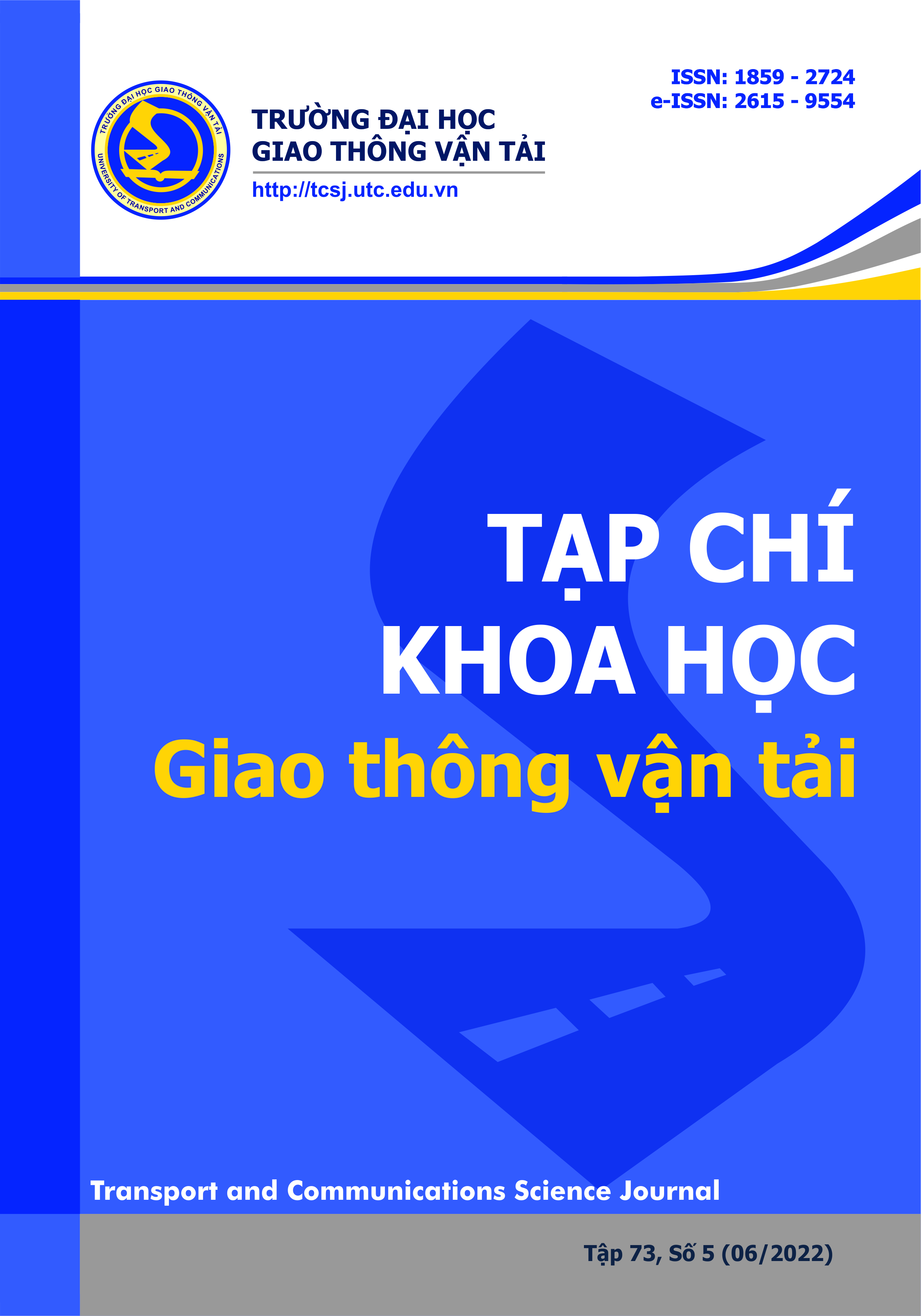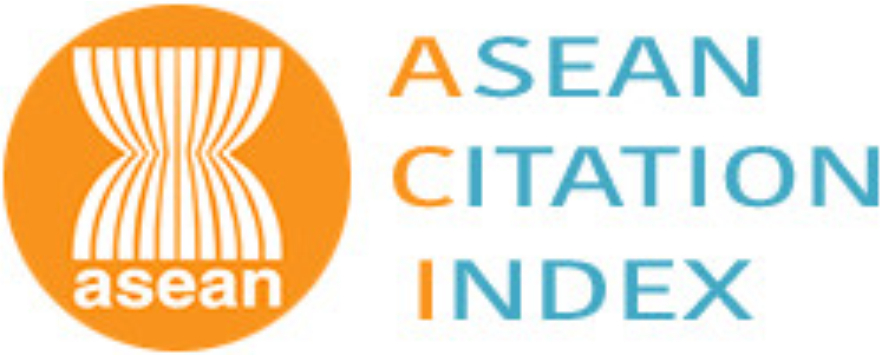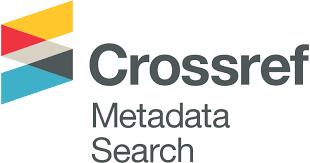Nghiên cứu ảnh hưởng của nhiệt độ đến biến dạng tổng thể và lực căng dây văng của cầu Trần Thị Lý
Email:
vdhung@dut.udn.vn
Từ khóa:
Mô hình PTHH, ảnh hưởng của nhiệt độ, cầu dây văng, biến dạng tổng thể, lực căng dây văng
Tóm tắt
Ảnh hưởng của nhiệt độ đến các ứng xử của cầu dây văng được nhiều nghiên cứu quan tâm trong thời gian gần đây. Việc đánh giá tác động của nhiệt độ lên ứng xử công trình cầu dây văng là hết sức cần thiết để có các biện pháp duy tu bão dưỡng kịp thời. Do đó, bài báo tiến hành phân tích ảnh hưởng của ảnh hưởng của nhiệt độ đến biến dạng tổng thể của kết cấu nhịp và tháp cầu Trần Thị Lý (Đà Nẵng) bằng phần mềm phần tử hữu hạn (PTHH). Đồng thời ảnh hưởng của nhiệt độ đến biến thiên lực căng dây văng cũng được làm rõ. Đầu tiên, cầu dây văng Trần Thị Lý sẽ được mô hình hóa bằng phần mềm phần tử hữu hạn và mô hình tính toán sẽ được so sánh với kết quả đo đạc thực nghiệm để xác thực mô hình. Tải trọng nhiệt độ tính toán được lấy theo TCVN 11823-2017 với hai loại chính đó là nhiệt độ phân bố đều và gradient nhiệt độ. Kết quả phân tích cho thấy nhiệt độ ảnh hưởng khá lớn đến biến dạng tổng thể của cầu. Chuyển vị theo phương dọc cầu của tháp cầu là khá lớn. Đối với kết cấu nhịp thì chuyển vị theo phương đứng là tương đối lớn. Ngoài ra, chênh lệch của nhiệt độ có thể gây ra thay đổi lực căng trong dây văng. Đối với các dây văng ở nhịp biên thì nhiệt độ làm giảm lực căng trong dây, trong khi đó đối với nhịp chính thì sự thay đổi lực căng có sự khác nhau, tùy theo biến dạng của tổng thể cầu và vị trí dây văng. Kết quả nghiên cứu cho thấy tải trọng nhiệt độ có ảnh hưởng tương đối lớn lên biến dạng và biến thiên lực căng dây cầu Trần Thị Lý, cần có những lưu ý trong quá trình bão dưỡng và khai thác cầu đặc biệt trong những điều kiện nắng nóngTài liệu tham khảo
[1]. N. D. Battista, J. Brownjohn, H. P. Tan, K. Y. Koo, Measuring and modelling the thermal performance of the Tamar suspension bridge using a wireless sensor network, Struct. frastruct. Eng, 11 (2013) 176–193. https://doi.org/10.1080/15732479.2013.862727.
[2]. M. Tong, L. G. Tham, F. Au, P. K. K. Lee, Numericalmodelling for temperature distribution in steel ridges, Comput. Struct, 79 (2001) 583–593. https://doi.org/10.1016/S0045-7949(00)00161-9.
[3]. S. H. Kim, S. J. Park, J. X. Wu, J. H. Won, Temperature variation in steel box girders of cable-stayed bridges during construction, J. Constr. Steel Res, 112 (2015) 80–92. https://doi.org/10.1016/j.jcsr.2015.04.016.
[4]. X. Xiang, J. Dong, H. Liu, J. Zhang, W. Li, Determination of parameters of temperature field of box-girder bridge in winter weather of plateau, J. Highway Transp. Res. Dev, 29 (2012) 58–63. https://doi.org/10.3969/j.issn.1002-0268.2012.03.011.
[5]. J. Suzuki, Y. Ohba, Y. Uchikawa, K. Hoshikawa, K. Kimura, Monitoring temperatures on a real box-girder bridge and energy budget analysis for basic information on bridge cooling and surface freezing, J. Bridge Eng, 12 (2007) 45–52. https://doi.org/10.1061/(ASCE)1084-702(2007)12:1(45).
[6]. M. A. El-Shaib, S. M. El-Badawy, E. S. A. Shawaly, CoMParison of AASHTO 1993 and MEPDG considering the Egyptian climatic conditions, Innovative Infrastruct, Solution, 2 (2017) 18. https://doi.org/10.1007/s41062-017-0067-6.
[7]. AASHTO, AASHTO LRFD bridge design specifications.Washington, DC: AASHTO, 2017.
[8]. Tiêu chuẩn quốc gia Việt Nam TCVN 11823:2017, Tiêu chuẩn về thiết kế cầu đường bộ Việt Nam, 2017.
[9]. H. L. Zhang, J. Li, C. G. Liu, T. H. Jiang, J. Wei, Thermal effect of the cable-stayed bridge tower, Wuhan Univ. J. Nat. Sci, 8 (2003) 1121–1125. https://doi.org/10.1007/BF02903684.
[10]. H. V. Le, M. Nishio, Time-series analysis of GPS monitoring data from a long-span bridge considering the global deformation due to air temperature changes, Journal of Civil Structural Health Monitoring, Springer, 2015. https://doi.org/10.1007/s13349-015-0124-9
[11]. Hồ Thị Lan Hương, Nghiên cứu đánh giá độ chính xác công nghệ GPS trong hệ thống quan trắc cầu dây, Tạp chí kỹ thuật xây dựng công trình giao thông và địa kỹ thuật, số đặc biệt 40 năm hợp tác Việt Nam – Nhật Bản, 2013.
[12]. Y. H. Cao, J. S. Yim, Y. Zhao, M. L. Wang, Temperature effects on cable stayed bridge using health monitoring system: A case study, Struct. Health Monit, 10 (2010) 523–537. https://doi.org/10.1177/1475921710388970
[13]. Y. L. Xu, B. Chen, C. L. Ng, K. Y. Wong, W. Y. Chan, Monitoring temperature effect on a long suspension bridge, Struct. Control Health Monit, 17 (2010) 632–653. https://doi.org/10.1002/stc.340
[14]. Y. Xia, B. Chen, X. Q. Zhou, Y. L. Xu, Field monitoring and numerical analysis of Tsing Ma uspension Bridge temperature behavior, Struct. Control Health Monit, 20 (2013) 560–575. https://doi.org/10.1002/stc.515
[15]. Y. Zhou, L. M. Sun, Z. J. Peng, Mechanisms of thermally induced deflection of a long-span cable-stayed bridge, Smart Struct. Syst, 15 (2015) 505–522. https://doi.org/10.12989/sss.2015.15.3.505.
[16]. Q. Bhatti, Structural health monitoring of single degree of freedom flexible structure having active mass damper under seismic load, Innovative Infrastruct, Solution, 3 (2018) 33. https://doi.org/10.1007/s41062-018-0139-2.
[17]. F. Treyssede, Finite element modeling of temperature load effects on the vibration of local modes in multi-able structures, J. Sound Vib, 413 (2018) 191–204. https://doi.org/10.1016/j.jsv.2017.10.022.
[18]. D. H. Yang, T. H. Yi, H. N. Li, Y. F. Zhang, Monitoring andanalysis of thermal effect on tower displacement in cable-stayedbridge, Measurement, 115 (2018) 249–257. https://doi.org/10.1016/j.measurement.2017.10.036.
[19]. Sở GTVT thành phố Đà Nẵng, Hồ sơ thiết kế cầu Trần Thị Lý, 2009.
[20]. Midas civil, https://www.midasoft.com/bridge-library/civil/products/midascivil, 2019.
[21]. Công ty tư vấn triển khai công nghệ & XDGT, Trường đại học Giao thông vận tải Hà Nội, Báo cáo chi tiết kết quả thử tải và kiểm định cầu Trần Thị Lý (Đà Nẵng), tháng 4/2013.
[2]. M. Tong, L. G. Tham, F. Au, P. K. K. Lee, Numericalmodelling for temperature distribution in steel ridges, Comput. Struct, 79 (2001) 583–593. https://doi.org/10.1016/S0045-7949(00)00161-9.
[3]. S. H. Kim, S. J. Park, J. X. Wu, J. H. Won, Temperature variation in steel box girders of cable-stayed bridges during construction, J. Constr. Steel Res, 112 (2015) 80–92. https://doi.org/10.1016/j.jcsr.2015.04.016.
[4]. X. Xiang, J. Dong, H. Liu, J. Zhang, W. Li, Determination of parameters of temperature field of box-girder bridge in winter weather of plateau, J. Highway Transp. Res. Dev, 29 (2012) 58–63. https://doi.org/10.3969/j.issn.1002-0268.2012.03.011.
[5]. J. Suzuki, Y. Ohba, Y. Uchikawa, K. Hoshikawa, K. Kimura, Monitoring temperatures on a real box-girder bridge and energy budget analysis for basic information on bridge cooling and surface freezing, J. Bridge Eng, 12 (2007) 45–52. https://doi.org/10.1061/(ASCE)1084-702(2007)12:1(45).
[6]. M. A. El-Shaib, S. M. El-Badawy, E. S. A. Shawaly, CoMParison of AASHTO 1993 and MEPDG considering the Egyptian climatic conditions, Innovative Infrastruct, Solution, 2 (2017) 18. https://doi.org/10.1007/s41062-017-0067-6.
[7]. AASHTO, AASHTO LRFD bridge design specifications.Washington, DC: AASHTO, 2017.
[8]. Tiêu chuẩn quốc gia Việt Nam TCVN 11823:2017, Tiêu chuẩn về thiết kế cầu đường bộ Việt Nam, 2017.
[9]. H. L. Zhang, J. Li, C. G. Liu, T. H. Jiang, J. Wei, Thermal effect of the cable-stayed bridge tower, Wuhan Univ. J. Nat. Sci, 8 (2003) 1121–1125. https://doi.org/10.1007/BF02903684.
[10]. H. V. Le, M. Nishio, Time-series analysis of GPS monitoring data from a long-span bridge considering the global deformation due to air temperature changes, Journal of Civil Structural Health Monitoring, Springer, 2015. https://doi.org/10.1007/s13349-015-0124-9
[11]. Hồ Thị Lan Hương, Nghiên cứu đánh giá độ chính xác công nghệ GPS trong hệ thống quan trắc cầu dây, Tạp chí kỹ thuật xây dựng công trình giao thông và địa kỹ thuật, số đặc biệt 40 năm hợp tác Việt Nam – Nhật Bản, 2013.
[12]. Y. H. Cao, J. S. Yim, Y. Zhao, M. L. Wang, Temperature effects on cable stayed bridge using health monitoring system: A case study, Struct. Health Monit, 10 (2010) 523–537. https://doi.org/10.1177/1475921710388970
[13]. Y. L. Xu, B. Chen, C. L. Ng, K. Y. Wong, W. Y. Chan, Monitoring temperature effect on a long suspension bridge, Struct. Control Health Monit, 17 (2010) 632–653. https://doi.org/10.1002/stc.340
[14]. Y. Xia, B. Chen, X. Q. Zhou, Y. L. Xu, Field monitoring and numerical analysis of Tsing Ma uspension Bridge temperature behavior, Struct. Control Health Monit, 20 (2013) 560–575. https://doi.org/10.1002/stc.515
[15]. Y. Zhou, L. M. Sun, Z. J. Peng, Mechanisms of thermally induced deflection of a long-span cable-stayed bridge, Smart Struct. Syst, 15 (2015) 505–522. https://doi.org/10.12989/sss.2015.15.3.505.
[16]. Q. Bhatti, Structural health monitoring of single degree of freedom flexible structure having active mass damper under seismic load, Innovative Infrastruct, Solution, 3 (2018) 33. https://doi.org/10.1007/s41062-018-0139-2.
[17]. F. Treyssede, Finite element modeling of temperature load effects on the vibration of local modes in multi-able structures, J. Sound Vib, 413 (2018) 191–204. https://doi.org/10.1016/j.jsv.2017.10.022.
[18]. D. H. Yang, T. H. Yi, H. N. Li, Y. F. Zhang, Monitoring andanalysis of thermal effect on tower displacement in cable-stayedbridge, Measurement, 115 (2018) 249–257. https://doi.org/10.1016/j.measurement.2017.10.036.
[19]. Sở GTVT thành phố Đà Nẵng, Hồ sơ thiết kế cầu Trần Thị Lý, 2009.
[20]. Midas civil, https://www.midasoft.com/bridge-library/civil/products/midascivil, 2019.
[21]. Công ty tư vấn triển khai công nghệ & XDGT, Trường đại học Giao thông vận tải Hà Nội, Báo cáo chi tiết kết quả thử tải và kiểm định cầu Trần Thị Lý (Đà Nẵng), tháng 4/2013.
Tải xuống
Chưa có dữ liệu thống kê

Nhận bài
11/05/2022
Nhận bài sửa
03/06/2022
Chấp nhận đăng
14/06/2022
Xuất bản
15/06/2022
Chuyên mục
Công trình khoa học
Kiểu trích dẫn
Đỗ Anh, V., Võ Duy, H., & Lê Văn, H. (1655226000). Nghiên cứu ảnh hưởng của nhiệt độ đến biến dạng tổng thể và lực căng dây văng của cầu Trần Thị Lý. Tạp Chí Khoa Học Giao Thông Vận Tải, 73(5), 588-603. https://doi.org/10.47869/tcsj.73.5.11
Số lần xem tóm tắt
318
Số lần xem bài báo
331









